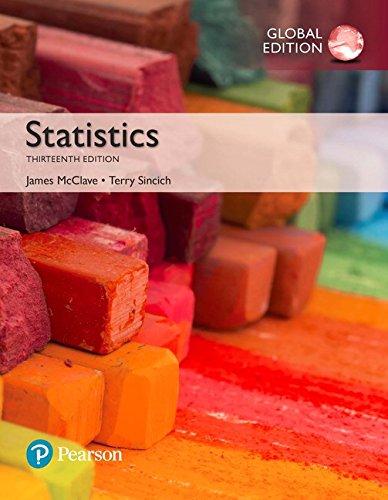Speeding and young drivers. Psychologists conducted a survey of 258 student drivers and their attitudes toward speeding
Question:
Speeding and young drivers. Psychologists conducted a survey of 258 student drivers and their attitudes toward speeding and reported the results in the British Journal of Educational Psychology (Vol. 80, 2010). One of the variables of interest was the response to the question, “Are LO9 you confident that you can resist your friends’ persuasion to drive faster?” Each response was measured on a 7-point scale, from 1 = “definitely no” to 7 = “definitely yes.”
The data were collected 5 months after the students had attended a safe-driver presentation. The psychologists reported a sample mean response of 4.98 and a sample standard deviation of 1.62. Suppose it is known that the true mean response of students who do not attend a safe-driver presentation is m = 4.7.
a. Set up the null and alternative hypotheses for testing whether the true mean student-driver response 5 months after a safe-driver presentation is larger than 4.7.
b. Calculate the test statistic for the hypothesis test.
c. Find the rejection region for the hypothesis test, using a = .05.
d. State the appropriate conclusion, in the words of the problem.
e. Do the test results indicate that the safe-driver presentation was effective in helping students feel more confident that they can resist their friends’ persuasion to drive faster? Explain.
f. The distribution of response scores (on a 7-point scale)
for all student drivers is unlikely to be normal. Does this impact the validity of the hypothesis test? Why or why not?
Step by Step Answer:






